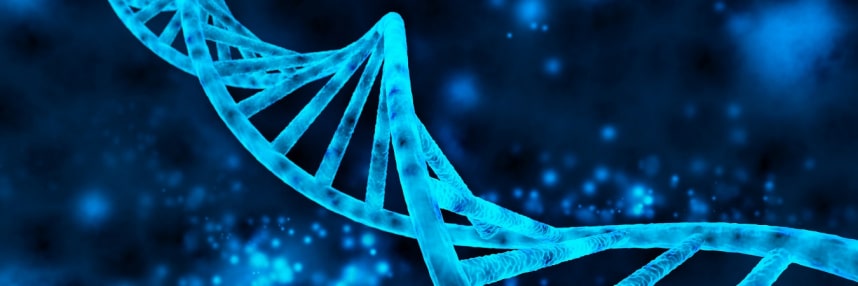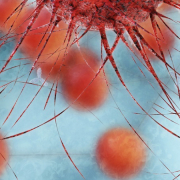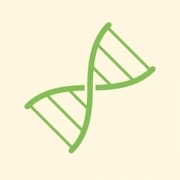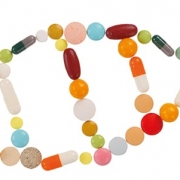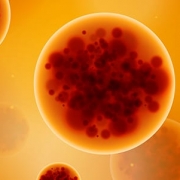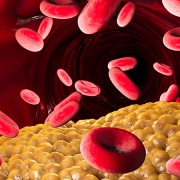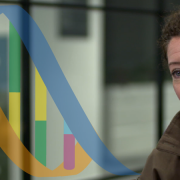We all have ‘the breast cancer gene’
You’ve seen the headlines and heard people talk about having ‘the gene for’ x, y or z – but do you know the facts behind the headlines?
Several years ago, the actress Angelina Jolie hit the headlines for deciding to have surgery to reduce her risk of cancer following on from genetic testing. But what does having ‘the gene for’ something actually mean? And how can we help our patients separate fact from fiction?
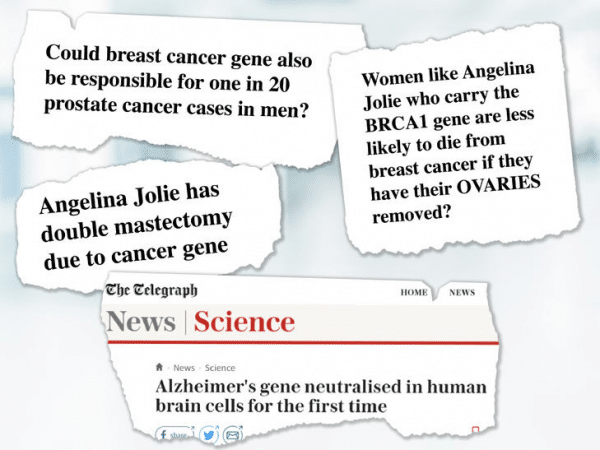
The misconception
It is commonly believed that there are genes for particular conditions, and that if an individual has one of these genes they are either more susceptible to or will develop the disease (depending on the gene in question).
A well-known example is ‘the breast cancer gene’. For example, a newspaper headline published in the Daily Mail in April 2015 read: ‘Women like Angelina Jolie who carry the BRCA1 gene are less likely to die from breast cancer if they have their ovaries removed’.
Headlines such as these imply that there are two sets of people out there: those who have the BRCA1 gene, and those who don’t.
The facts
In reality, everybody has the BRCA1 gene, but there are many different variants, or alleles, of the gene. It is certain variant forms of the gene (and any gene associated with disease risk) that may increase an individual’s risk, not the presence of the gene itself.
The BRCA1 gene produces a protein that is involved in repairing damaged DNA. DNA damage can occur from everyday processes in the cell, such as when cells divide, or from environmental factors, such as UV light. If such damage isn’t repaired properly these errors can be copied and may result in disease such as cancer.
Individuals such as Angelina Jolie, who have a variant in the BRCA1 gene meaning that it produces a protein which is less efficient at repairing DNA, are at increased risk of genetic errors and therefore the chance of developing breast cancer (40-80%). An accurate headline would therefore be: ‘Women like Angelina Jolie who carry a cancer risk variant of the BRCA1 gene are less likely to die from breast cancer if they have their breasts and ovaries removed’.
Beyond BRCA1 and breast cancer
BRCA1 was named because of its link with breast cancer: BReast Cancer Associated 1. (There is also a BRCA2 gene.) Despite the name, however, variants in BRCA1 are also associated with an increased risk of ovarian cancer, fallopian tube cancer, peritoneal cancer, prostate cancer and pancreatic cancer.
BRCA1 is an example of a single gene in which variants can have a profound effect on disease risk. But, in many cases, the relationship between genes (‘genotype’), their variants, and observable characteristics in an individual person (referred to as the ‘phenotype’) is much more complex. Often several or many genes play a part in disease, and lifestyle and the environment have a role, too. For example, breast feeding has been shown to reduce the chance of those with BRCA1 variants developing breast cancer, but this is not the case for those with BRCA2 variants. There are also variants in other genes that increase the chance of someone with BRCA1 or BRCA2 variants developing breast cancer.
For more information about various types of genomic variants, see our blog.
This article is part of the GEP’s annual #GenomicsConversation, during which, this year, we are busting myths, challenging misconceptions and explaining facts about genomics.
–
Please note: This article is for informational or educational purposes, and does not substitute professional medical advice.


